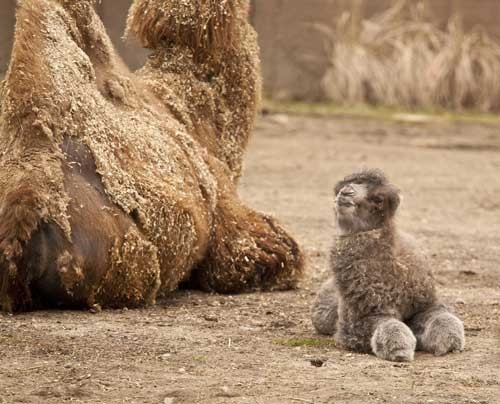
The Enchanting Baby Camel: A Journey into the World of the Desert’s Gentle Giant
In the heart of the arid desert, where the sun’s relentless rays paint the landscape in hues of gold and amber, there exists a creature of extraordinary grace and resilience: the baby camel. These adorable newborns, with their doe-eyed innocence and playful antics, embody the spirit of the desert, captivating hearts with their gentle nature and unwavering determination.
A Birth of Wonder
The arrival of a baby camel, known as a calf, is a momentous occasion in the desert. After a gestation period of approximately 15 months, the mother camel gives birth to a single calf, weighing around 100 pounds. The newborn calf is covered in a soft, velvety fur that ranges in color from light tan to dark brown, providing insulation against the harsh desert conditions.
First Steps into the Desert
Within hours of being born, the baby camel is able to stand and walk, its long, slender legs providing stability in the shifting sands. Its first steps are tentative and wobbly, but with each stride, it gains confidence, exploring its surroundings with wide-eyed curiosity. The calf’s mother remains close by, providing guidance and protection as it ventures into the unforgiving desert.
A Bond of Unbreakable Love
The bond between a mother camel and her calf is unbreakable. The mother is fiercely protective of her young, using her powerful body to shield it from danger. The calf, in turn, relies heavily on its mother for nourishment, warmth, and comfort. They spend countless hours together, the calf suckling from its mother’s milk and the mother grooming her calf’s delicate fur.
Adapting to the Desert’s Embrace
Baby camels are remarkably well-adapted to the harsh desert environment. Their long eyelashes and thick eyebrows protect their eyes from the sun’s glare, while their hump stores fat reserves that provide energy during times of scarcity. Their wide, padded feet distribute their weight evenly, allowing them to traverse the soft sand with ease.
A Playful Spirit
Despite the challenges of the desert, baby camels possess a playful and curious nature. They engage in playful chases, nibbling at each other’s ears and tails. Their playful antics bring a touch of joy and lightness to the otherwise unforgiving landscape.
Growing into Maturity
As baby camels grow, they gradually shed their soft fur and develop the distinctive hump that characterizes adult camels. Their legs become stronger, and they become more independent, venturing farther from their mothers to explore the desert. By the age of three, they are considered adults, ready to face the challenges of the desert on their own.
Cultural Significance
Baby camels hold a special place in the cultures of desert-dwelling peoples. In many nomadic tribes, camels are revered as a source of transportation, food, and clothing. Baby camels are particularly cherished, symbolizing hope, prosperity, and the continuation of the tribe’s lineage.
Conservation and Preservation
Baby camels face numerous threats in the wild, including habitat loss, poaching, and climate change. Conservation efforts are underway to protect these gentle creatures and ensure their survival in the desert ecosystem.
Conclusion
The baby camel is a testament to the resilience and beauty of the desert. Its playful spirit, unbreakable bond with its mother, and remarkable adaptations to the harsh environment make it a creature of wonder and inspiration. As we continue to explore the mysteries of the desert, may we always appreciate the enchanting presence of the baby camel, a symbol of hope and the enduring spirit of the wild.
